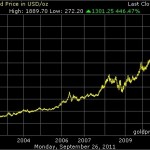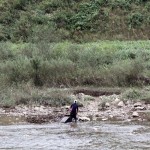Institute for Far Eastern Studies (IFES)
2011-9-29
This year’s trade volume between China and the DPRK reached an all time high.
According to the (South) Korea Trade Investment Promotion Agency, the trade volume between China and North Korea between January and July of 2011 recorded 3.097 billion USD, surpassing last year’s 3.472 billion USD by 88 percent.
This is the second year since 2008 for the yearly trade volume to continue to break the record of the previous year.
During the same period, China exported 1.783 billion USD and imported 1.314 billion USD to North Korea. Compared to the same period last year, exports increased by 53.3 percent while imports increased by 169.2 percent, and its trade surplus decreased by 30.4 percent.
The main exports of China are oil, diesel freight vehicles, nitrogenous fertilizers, and grains while the top imports were anthracites, steel, and non-alloy pig irons.
The total amount of fertilizer North Korea imported between January and June totaled 193,960 tons (equaling about 39.88 million USD), a hike of 91 percent against last year’s 99,588 tons (25.4 million USD).
The price per ton of imported fertilizers was 188 USD for ammonium sulfate fertilizer (164,456 ton) and 346 USD for urea fertilizers (25,577 ton). Last year, 59,110 tons of ammonium sulfate fertilizer and 45,310 tons of urea fertilizer were imported. A drastically higher amount of ammonium sulfate fertilizer was imported this year compared with the previous year, the cause of which is speculated to be either a radical decrease in the fertilizer production in North Korea or an attempt to improve the country’s food production.
The total amount of grains imported from China from January to June totaled 149,173 tons, a boost of 5.5 percent from the previous year. The price of grain per ton went up from 372 USD to 404 USD, a rise of 8.6 percent. The cost of imported grain increased 14.4 percent against last year, an increase from 52.7 million USD to 63.1 million USD.
The grains imported were corn (38.2 percent), flour (37.5 percent), rice (16.9 percent), and bean (7.2 percent). Compared to last year, corn and flour imports rose while rice and bean slightly decreased. This year’s average price per ton of grain was 661 USD for bean, 538 USD for rice, 395 USD for flour, and 304 USD for corn.





